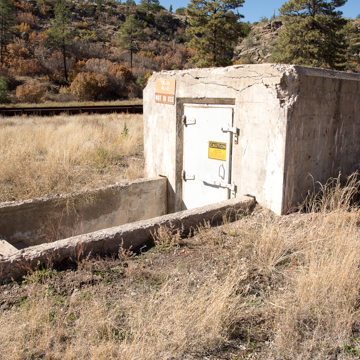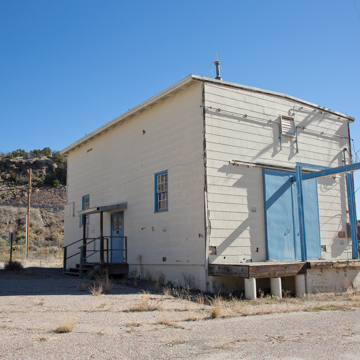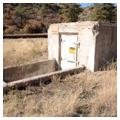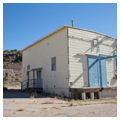You are here
Parajito Laboratory
The Pajarito Laboratory in Technical Area 18 occupies the former Pajarito Club, a short-lived hunting and fishing club that the entrepreneur Ashley Pond launched in 1914 before turning his attention in 1917 to establishing Los Alamos Ranch School. Starting in mid-1943, the Radioactivity Group under Emilo Segrè used this area to conduct tests with ionization chambers and amplifiers to determine the rates of spontaneous fission in plutonium. These tests led to the crash program launched in August 1944 to develop a plutonium implosion bomb, after Segrè discovered that the Pu-239 from Hanford was contaminated by Pu-240 and that its high rate of spontaneous fission greatly increased the risk of pre-detonation in the gun-type bomb. The Pond Cabin (TA-18-29), a log cabin built for the Parajito Club in 1914, became Segrè’s office during the radioactivity tests.
From later 1944 into 1945, the Pajarito Laboratory was a proving ground for implosion experiments using the magnetic method, which studied the velocity of explosions as they passed through magnetic fields. The “Battleship” Control Building (TA-18-2) was constructed in 1944 as a command bunker for those tests. The board-formed, cast-in-place reinforced concrete structure has a blast resistant steel door on its east side and is named for its bow-shaped west side that, shielded with steel plates, faced toward the blasts.
The Slotin Building (TA-18-1) was built in early 1946, immediately after the war. The wood-frame structure, covered with asphalt shingles, was used in the assembly of nuclear cores and is named after Louis Slotin, a physicist who received a fatal dose of radiation while conducting a critical assembly experiment here in May 1946.
The three structures are included in the Manhattan Project National Historical Park.
References
Los Alamos National Laboratory. The History and Legacy of the Manhattan Project at Los Alamos National Laboratory. Los Alamos: Los Alamos National Laboratory, 2015.
McGehee, Ellen, Sheila McCarthy, Ken Towery, John Ronquillo, Kari Garcia, and John Isaacson. Sentinels of the Atomic Dawn: A Multiple-Property Evaluation of the Remaining Manhattan Project Properties at Los Alamos (1942–1946). Historic Building Survey Report No. 215. Los Alamos, NM: Los Alamos National Laboratory, 2003.
National Park Service. Manhattan Project Sites. Special Resource Study/Environmental Assessment. Washington, D.C.: Department of the Interior, 2010.
Writing Credits
If SAH Archipedia has been useful to you, please consider supporting it.
SAH Archipedia tells the story of the United States through its buildings, landscapes, and cities. This freely available resource empowers the public with authoritative knowledge that deepens their understanding and appreciation of the built environment. But the Society of Architectural Historians, which created SAH Archipedia with University of Virginia Press, needs your support to maintain the high-caliber research, writing, photography, cartography, editing, design, and programming that make SAH Archipedia a trusted online resource available to all who value the history of place, heritage tourism, and learning.






